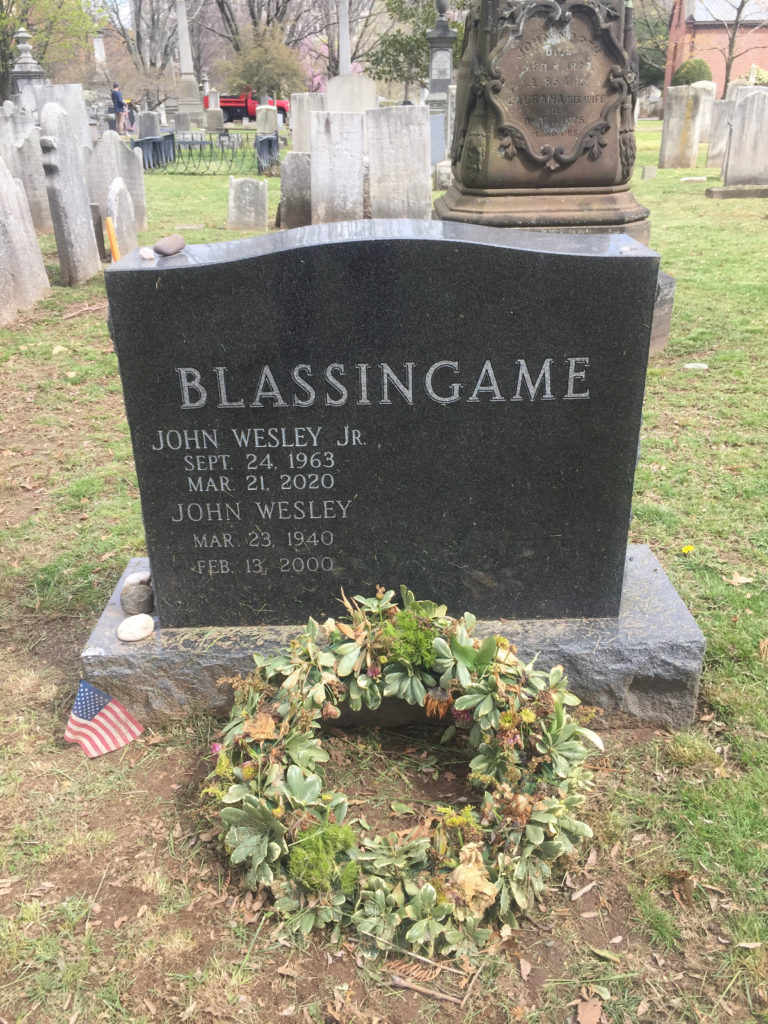Erik Visits an American Grave, Part 936
This is the grave of John Blassingame.

Born in 1940 in Covington, Georgia, Blassingame grew up in the Jim Crow South but managed to become one of the few Black students to get a higher education. He graduated from Fort Valley State, an HBCU in Georgia, in 1960 and then went on to Howard University for his master’s degree in History, which he received the next year. From there, it was on to Yale, where he received his PhD in 1971. There, he worked with the legendary historian of the South C. Vann Woodward. He wrote a dissertation titled “A Social and Economic Study of the Negro in New Orleans, 1860–1880.” The title of this is dry, but the work itself was pioneering. Blassingame became one of the first Black historians in the modern academy. It’s hardly surprising that Yale hired him to keep him there. He would spend the next three decades as one of the most important historians of the Black experience in the South to ever live.
Probably Blassingame’s most important book was The Slave Community: Plantation Life in the Antebellum South, which he published in 1972. The reason is that it was perhaps the first overarching discussion of the lives of slaves told from the slave perspective by a Black historian. This was a stark and long overdue rejection of the plantation myths of post-Reconstruction America told by racist historians such as Ulrich B. Phillips. Blassingame was not the first to reject Phillips and his followers, but those books by postwar white liberals such as Stanley Elkins and Kenneth Stampp tended to infantalize slaves (in fact that was Elkins’ actual argument, based upon psychological theories about the Holocaust) and did not take the words of slaves seriously either. Blassingame noted the continued and pronounced influence of African culture in the slave world, explored the cultural forms of slave life, and, most importantly, centered the idea that slaves had agency over their own lives, as limited as it might have been. In other words, this was the first real social history of slave life. It would influence a generation of historians, even as some questioned some of the methodology and findings today. There is very little in my teaching of slavery when I teach the survey or the Civil War class that does not in some way come from Blassingame’s findings. Amazingly as well, Blassingame was the first mainstream historian to take the slave narratives seriously, as others had said they were hopelessly written for white audiences and thus had no real insights on slave life. He did rely pretty heavily on the kind of psychological arguments so common in American letters in the 1970s and this does not age well at all.
The next year, Blassingame turned his dissertation into a book, publishing Black New Orleans, 1860–1880. In 1976, he published his biography of Frederick Douglass, Frederick Douglass, the Clarion Voice. He would later edit Douglass’ papers in six volumes. Blassingame also contributed many essays to books and also published his edited volume Slave Testimony: Two Centuries of Letters, Speeches, Interviews, and Autobiographies, which emphasized the words of slaves in describing their lives. He would teach at Yale for the rest of his career. After his 1970s output, he dedicated himself to his Douglass series and other edited works.
John Blassingame died in 2000, at the age of 59. No cause of death was given. It’s such a shame because he was still so young and had so much to offer. I believe his son, also buried here, was a publisher of a couple of Black fashion magazines. In 2004, the Southern Historical Association founded its Blassingame Award, which “honors distinguished scholarship and mentorship in African American history” and is given every three years. Clayborne Carson was the winner in 2018.
John Blassingame is buried in Grove Street Cemetery, New Haven, Connecticut.
If you would like this series to visit other historians of slavery, you can donate to cover the required expenses here. Stanley Elkins is in Northampton, Massachusetts and John Henrik Clarke is in Columbus, Georgia. Previous posts in this series are archived here.


